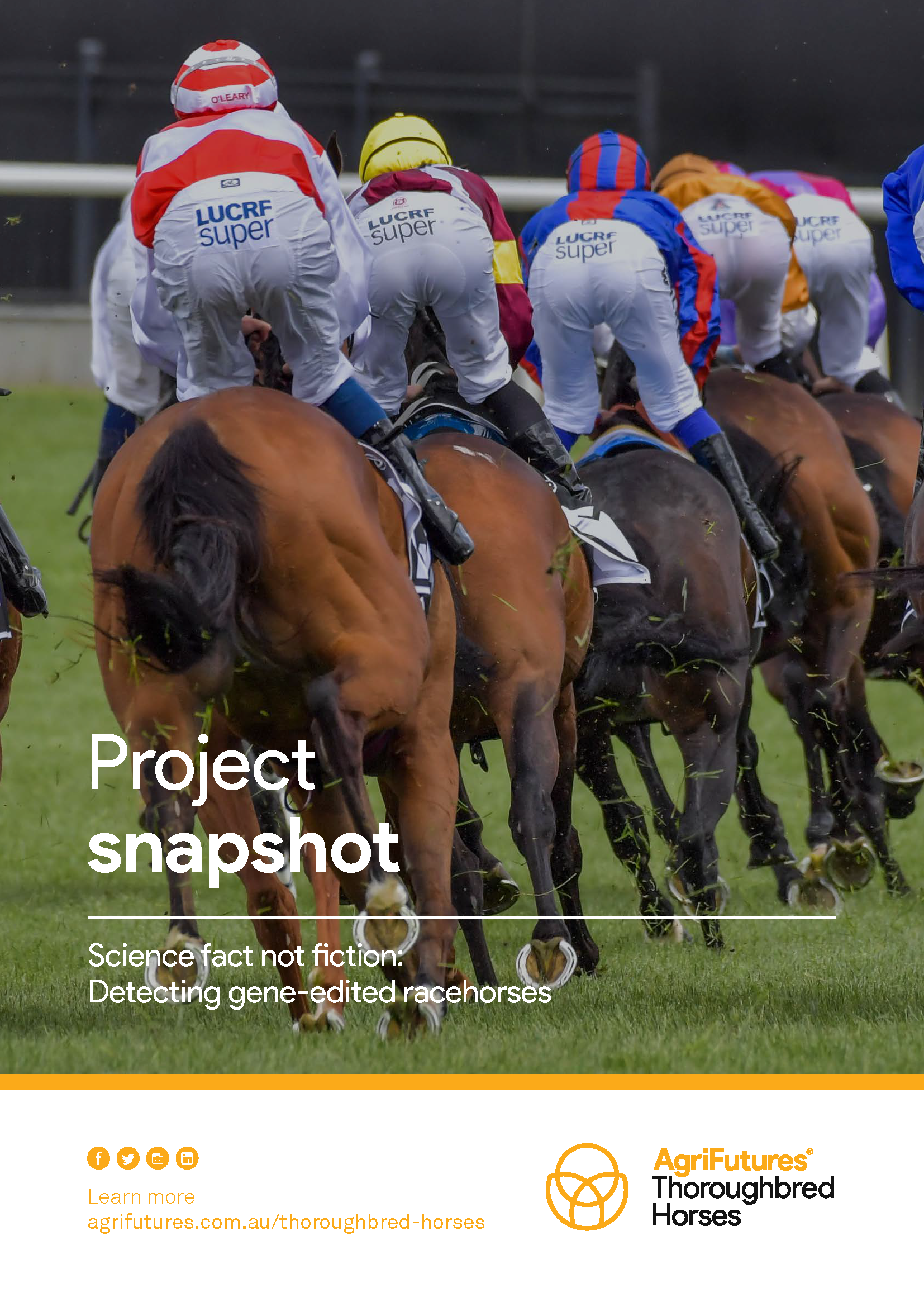This project describes the first step in the development of a test to detect embryonic gene editing in thoroughbred racehorses. Embryonic gene editing is a form of gene doping.
Gene doping is commonly referred to as the non-therapeutic use of gene therapy to improve sporting performance. The international governing body overseeing thoroughbred racing, the International Federation of Horseracing Authorities (IFHA), has banned the application of gene doping in any form through its International Agreement on Breeding, Racing and Wagering.
Gene editing is a genetic engineering technique that offers a more refined way to perform gene therapy and thus gene doping. Currently, the only way to identify whether embryonic gene editing has occurred is to compare the foal’s genetic sequence with that of its parents, to see whether a mutation that has occurred on both strands of DNA in the foal is not observed in its parents. While this is possible, it is expensive and technically difficult.
To address these difficulties, a simple, cost-effective method to screen genes of interest in horses was designed. The method uses a custom designed commercial array to target and capture DNA sequences of interest. This DNA is then subjected to genome sequencing. The developed sequences are aligned to the horse reference genome to identify any DNA variation, including new DNA mutations that have originated in foals when compared with their parents. This method is significantly cheaper and simpler to analyse than using DNA from the whole genome.
The kit was trialled on 23 parent-parent-offspring trios. Three new DNA variants were identified as potentially being new mutations. These will need to be assessed individually in the laboratory by sequencing to confirm whether they truly are new mutations, as it is possible they are false positives.
This project is the first to develop a method to identify these new de novo mutations in the horse, and is the first study to apply exome sequencing of trios to detect gene editing for performance enhancement. Future work includes confirming the potential new mutations with individual sequencing and using the test to detect gene editing. This research will benefit racing authorities as they continue to develop new doping detection methods.





